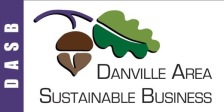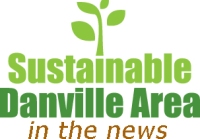The kids have been back in school for over a month and are settling down to a routine. But does the routine include an environmentally friendly option for getting to and from school? Forty years ago, over 50% of kids in the US rode their bikes to school. In 2004, only 3% of kids rode their bikes to school. Biking and walking has been replaced by parents zipping their kids to and from school and to other activities by car. This may seem safe and hassle-free for the kids, but its prevents kids from getting needed exercise, adds considerably to traffic congestion (think Danville Blvd. / Hartz Avenue at 8:00 am Monday through Friday), sends a cocktail of pollutants into the air that we all breath, and emits greenhouse gases into the atmosphere. Considering all of these factors, the “true cost” of driving our kids everywhere is more expensive than we might think.
Fortunately, there are many environmentally friendly options for getting your kids to school and many compelling benefits for those that try them.
Bike or Walk – Walking and biking are great alternatives for students that live a few miles from their school. These activities can promote responsible behavior, awareness of the outdoor environment and help students stay physically fit. Alamo and Danville has a number of bike trails and routes, which are located near our schools. Investigate possible biking or walking routes. If you live far away from the school, but want your child to start to experience walking/riding, find a safe place to drop them off and pick them up as far away from school as is appropriate for their ability.
If your child plans to bike, take one or two trial runs with him or her and make sure he or she has the right size helmet, working brakes, properly inflated tires, appropriate attire, and enough time to get to school. Also, pay attention to weather reports for back-up plans in case of bad weather at the end of the school day. Help your child learn the rules of the road and ride in specially designated areas when possible. For bike safety tips, go tohttp://www.nhtsa.gov/people/injury/pedbimot/bike/kidsandbikesafetyweb/index.htm
Form a “Walking School Bus” or “Bicycle Train” – A walking school bus is a group of children walking to school with one or more adults. The bus leaves when the farthest family begins to walk the route and pick up kids along the way. It can be as informal as two families taking turns walking their children to school or as structured as a planned route with meeting points, a timetable and a schedule of trained volunteers. A variation on the walking school bus is a bicycle train where a group of children and adult leaders ride together to school. Learn more about how to create safe routes to school at http://www.saferoutesinfo.org/
Form a “School Pool” – This takes a little coordination, but reduces your drives per week and definitely cuts down on energy use and air pollution. Carpooling also fosters a sense of community among riders. A carpool can give students a sense of responsibility about being on time and an arena where they can practice their ‘pleases’ and ‘thank-you’s’. Conversations in the car allow parents a chance to get to know what’s happening at school in a way a single child rarely shares. Learn more about carpooling to school at: https://www.CarpooltoSchool.com/
Take a Public Bus – Riding the public bus can be a wonderful experience for a child. Safe and reliable, there are public CCCTA buses in town that stop at or near many of our schools. The CCCTA school bus routes can be seen at: http://countyconnection.com/maps-schedules/#school bus fares for CCCTA are $20.00 for a 12-ride pass and $60.00 for a monthly pass. One great source for free bus tickets is 511 Contra Costa www.511contracosta.org. They will give 2 – $20 bus tickets to a handful of kids who apply in the beginning of the year in exchange for filling out a survey at the end of the year.
Other Tips – If you do drive (hopefully in a carpool) please remember to turn off your car while waiting. An idling engine operates far below its peak temperature, creating fuel residue in the engine, and generating air pollution right where kids are congregating. Another suggestion is to try to combine a trip to school with errands that you need to run. This will save time, reduce your total driving, and reduce the number of times you need to start a “cold car.” Starting a car after it has been sitting for more than an hour creates up to five times more pollution than when the engine is warm.
Preserving Quality Time – Many parents consider one-on-one time with their kids in the car to be a special time to visit. But there may be alternatives that are just as special or even better. You may consider talking with your child about alternatives which could preserve this specialness, knowing that such a change might enhance your child’s development while at the same time improving the future health of your child’s natural environment.
Have other ideas to ditch the car for your ride to school? Send them to Sustainabledanville@gmail.com , twitter @greendanville or http://www.facebook.com/sustainabledanvillearea.
Reprinted by permission: Danville Today News




